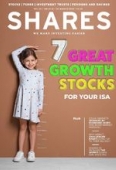Archived article
Please note that tax, investment, pension and ISA rules can change and the information and any views contained in this article may now be inaccurate.
What’s spooking the markets this time?

A cocktail of negative data has troubled the markets once more, resulting in large declines in share prices around the world amid worries about global growth.
Investors have flocked to sovereign debt including Australian government bonds where the yield on the 10-year notes has fallen to a record low of 1.756%. Higher demand for bonds pushes up their price and pulls down the yield. Gold has also been in demand as economic fears tend to stir up higher interest for so-called safe haven assets.
So what’s behind the latest stock sell-off? There are numerous factors but the one that’s really spooked investors is how short and long-dated US government bonds have behaved.
The yield on the three-month US Treasury notes last week exceeded the 10-year note for the first time since 2007.
Bond investors normally expect to be compensated more for taking on the added risk of owning bonds with longer maturities. But when yields on short-dated notes exceed that on the 10-year bonds it is known as an inverted yield curve and such moves have historically signalled a recession approximately one to two years later.
Higher short-term borrowing costs can result in companies finding it more expensive to fund their operations and so management may reduce investment in their business including labour. Consumer borrowing costs also rise and consumer spending slows. All these factors can trigger a recession.
The latest movement was triggered by longer-dated yields falling by more than shorter-dated ones as investors sought to buy longer maturity bonds amid negative economic data from various parts of the world. The shorter-dated yields only fell by a small amount as the US Federal Reserve last week signalled it didn’t expect to raise interest rates in 2019.
Bonds have been in demand in recent sessions because investors consider them to be lower risk than equities. And it is fairly obvious from the stream of economic data why individuals want lower-risk investments.
Data last week showed that Germany’s manufacturing industry was shrinking at its fastest pace in more than six and a half years. China’s exports fell by more than 20% in February amid the trade dispute with the US.
The UK economy has stalled with 0.2% growth in the three months to January, the same as the previous quarter. And US jobs growth in February was the weakest in nearly one and a half years.
Without wanting to sound like a broken record, it is really important in times such as now to have a diversified portfolio – and that includes exposure to different asset classes and not simply a range of different equity funds.
Having exposure to bonds, property, commodities, infrastructure and other assets classes can act as a cushion to your portfolio in tougher times. You can get exposure to many of these asset classes through exchange-traded funds or mutual funds, for example, or directly.
In addition to this diversification it is also important not to dump your equity holdings when markets make sudden downward movements. Stock markets go up and down and you are better off holding on to your investments and riding out the market volatility than trading in and out.
Important information:
These articles are provided by Shares magazine which is published by AJ Bell Media, a part of AJ Bell. Shares is not written by AJ Bell.
Shares is provided for your general information and use and is not a personal recommendation to invest. It is not intended to be relied upon by you in making or not making any investment decisions. The investments referred to in these articles will not be suitable for all investors. If in doubt please seek appropriate independent financial advice.
Investors acting on the information in these articles do so at their own risk and AJ Bell Media and its staff do not accept liability for losses suffered by investors as a result of their investment decisions.

 magazine
magazine








